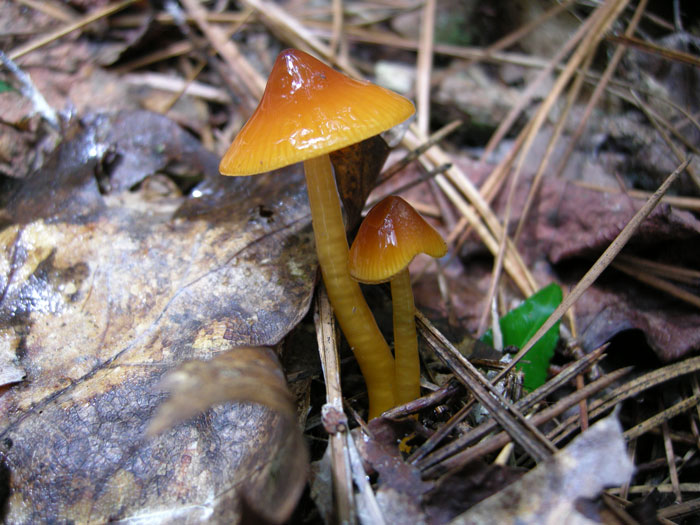Map Snapshot



2 Records
Status
Originally described from a single locality (Cheboygan Co., Michigan) in 1946. Smith and Hesler called it Hygrophorus perplexus (1963) but noted its similarity to the parrot Hygrocybe, H. psittacinus. The name was eventually changed to Hygrocybe psittacina var. perplexus (Sm & Hesler) Boert. Recently, the names of the "slimy" Hygrocybes has been changed to Gliophorus, so this little mushroom is now called Gliophorus perplexus. (L. Biechele, pers. comm.)
Seasonality Snapshot
Source: Wikipedia
| Gliophorus perplexus | |
|---|---|

| |
| Scientific classification | |
| Domain: | Eukaryota |
| Kingdom: | Fungi |
| Division: | Basidiomycota |
| Class: | Agaricomycetes |
| Order: | Agaricales |
| Family: | Hygrophoraceae |
| Genus: | Gliophorus |
| Species: | G. perplexus
|
| Binomial name | |
| Gliophorus perplexus | |
| Synonyms[1] | |
| |
Gliophorus perplexus is a species of agaric fungus in the family Hygrophoraceae. It was first described in 1954 by American mycologists Alexander H. Smith and Lexemuel Ray Hesler as Hygrophorus perplexus.
Description
[edit]Gliophorus perplexus is a small and slimy mushroom, with the cap barely reaching over an inch and the stipe (stem) two and a half inches in maturity. The sliminess, which covers all parts of the fruiting body including the gills, is a characteristic of the entire genus. The cap color ranges from yellow to orange, can sometimes have an umbo (central bump), and has translucent striations on the cap margin. The gills are pale pink when young and can become yellow-orange in maturity. The stipe is usually a more yellow or paler colored version of the cap, and is hollow.[2]
Similar Species
[edit]When young, Gliophorus psittacinus has strong green colors that fade upon maturity.[2]
Ecology
[edit]Gliophorus perplexus is thought to be saprobic, but more research is needed.[2]
Edibility
[edit]While not poisonous, G. perplexus is too small to be considered as a viable edible.[2]
References
[edit]- ^ "GSD Species Synonymy: Gliophorus perplexus (A.H. Sm. & Hesler) Kovalenko". Species Fungorum. CAB International. Retrieved 2014-06-16.
- ^ a b c d Sturgeon, Walter E. (2018-11-06). Appalachian Mushrooms: A Field Guide. Ohio University Press. ISBN 978-0-8214-4639-3.
External links
[edit]
